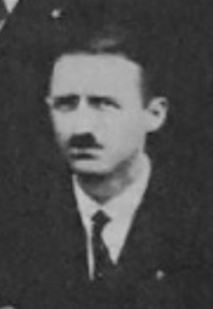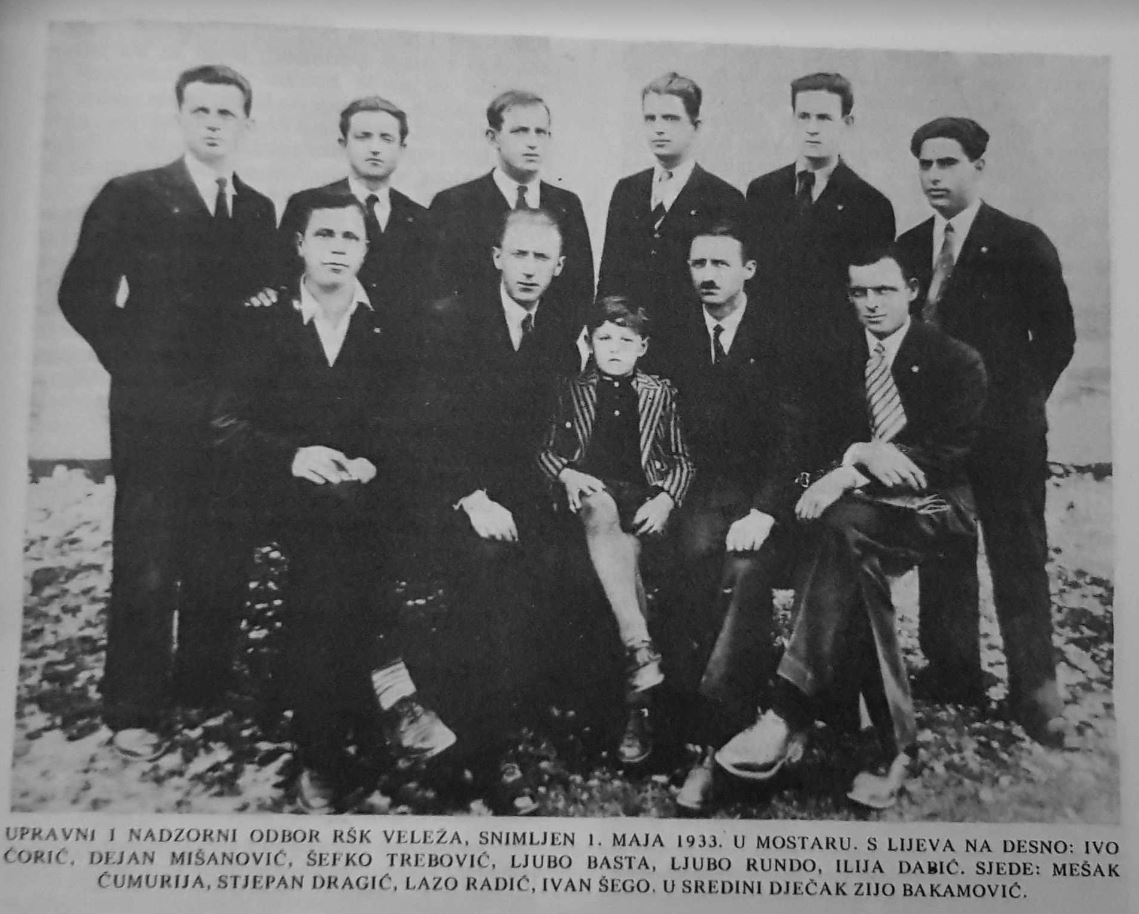
brochure "Partizanski spomenik u Mostaru" (1980)
book “Spomenica Mostara 1941-1945.”
another document or proof of the memorial stone (e.g., a photograph).
Lazo T. RADIŠIĆ
LAZAR LAZO RADIŠIĆ, son of TRIPKO, born on May 5, 1897* in Mostar, a tailor, pre-war activist for workers’ rights, and an activist of the National Liberation Movement (NOP) in Mostar. Official of the FC “Velež”. He was arrested by the Italians and interned at Mamula in 1942, from where he was released due to a kidney disease (according to another version, due to Italy’s surrender in 1943). He returned to Mostar. He was arrested for the second time during a raid in March 1944. Masked policemen found his pre-war RSK “Velež” badge, for which they threatened: “Do you know what this means? You will suffer because of this.” Lazo was arrested and taken to the Stara Gradiška camp, where he was executed in 1944.
Lazo involved his entire family (his wife Stana, his daughter Saveta-Gana who was a SKOJ member, and even his elderly 86-year-old mother Joka) in the NOP from the beginning of the uprising. Their house was one of the well-known war bases in Bjelušine, where couriers often visited. In March 1942, the wounded Šćepo Pavlović stayed at the Radišićs’ house, where he was treated by Dr. Zvonko Marić for a month until his departure in early April. Lazo’s daughter Gana, along with Tripo Uljarević’s girlfriend, visited her imprisoned father in Mamula, delivering a shipment of 38 packages to the arrested and deported fighters and bringing news about their condition. In one anecdote, “Baba Joka” (Grandma Joka) several times lay in bed, hiding medical supplies in her lap. On one occasion, when there was a considerable amount of supplies, she was dressed in two pairs of military trousers and lay in her bed until the search was completed. During one search, the police officers found a military blouse and cap. They asked Grandma Joka, ‘What is this, old lady?’ She replied, ‘It’s mine, I found it in the mountains a long time ago.'” Stana, Lazo’s wife, escorted the fighters throughout the entire war and, together with their daughter Gana, kept watch above the house, making sure that police agents, who frequented Bjelušine and the vineyard above the Radišićs’ house, wouldn’t catch the volunteers as they left. Even after Lazo’s arrest, Stana and Gana continued to support the NOP and received fighters and couriers.
Omer Šaput, the brother of the slain Safet Šaput, gave a statement after the war on October 19, 1945, which was published as the “Record of the City Commission for the Investigation of War Crimes of the Occupiers and their Collaborators” regarding Safet’s arrest, in which Lazo Radišić is mentioned. All the arrested individuals endured a similar ordeal.
“On March 24, 1944, there was a Ustasha protective police force from Sarajevo in Mostar, which, in collaboration with the Mostar police, carried out a series of arrests. (…). These arrests were carried out by agents, including Jakupović, the head of the protective police force in Sarajevo, agent Hafizović, Sušić Pavo (illegible), and agent Cvitanović from the Mostar police. Sušić Pavo, in particular, was very cruel, as were the others to varying degrees. I believe that all the agents are now in hiding. In Mostar, they kept several of the arrested individuals in prison for another month, subjecting them to horrific torture and terror. They tortured them with three days of hunger, gave them salt, beat them with fists, legs, batons, and threw them into the so-called ‘tram,’ and after a month, they were transported to Stara Gradiška, to a large penitentiary. In that group, there were 12 men and 4 women from Mostar. From Mostar, there were Professor Alikalfić Mustafa, Zajko Mehić, Omer Mesihović, Lazo Radišić, Hadžiselimović Arif Sabitage, Čulajević Dušan, Bučuk (Mahmut, editor’s note), Osman Novo, and my brother Safet. I don’t currently recall the names of others. Among the women were Fatima Balta, Fahira Ćišić, Dika Hadžić, and Bera Ćemalović. (…)”
* According to the book “Spomenica Mostara 1941-1945.”
http://rsdvelezmostar.blogspot.com/p/fk-velez.html; Konjhodžić, Mahmud (1981): “Mostarke”: fragmenti o revolucionarnoj djelatnosti i patriotskoj opredjeljenosti žena Mostara, o njihovoj borbi za slobodu i socijalizam, Opštinski odbor SUBNOR-a Mostar; Ćemalović, Enver (1986): Mostarski bataljon, Mostar; Halilbegović, Nihad (2006): Bošnjaci u jasenovačkom logoru, Sarajevo; Seferović, Mensur (2009): Zvijezde stajaćice, Zapisi o djevokama i majkama iz dva rata 1941-45 i 1991-95.; grupa autora (1961): Hercegovina u NOB 1. dio, Beograd, Vojno delo Fotografija Zapisnika: Halilbegović, Nihad (2006): Bošnjaci u jasenovačkom logoru, Sarajevo. Fotografija spomen-ploče: S. Demirović.
Do you have more information about this fighter? Share your stories and photographs. Let's keep the memory alive!


